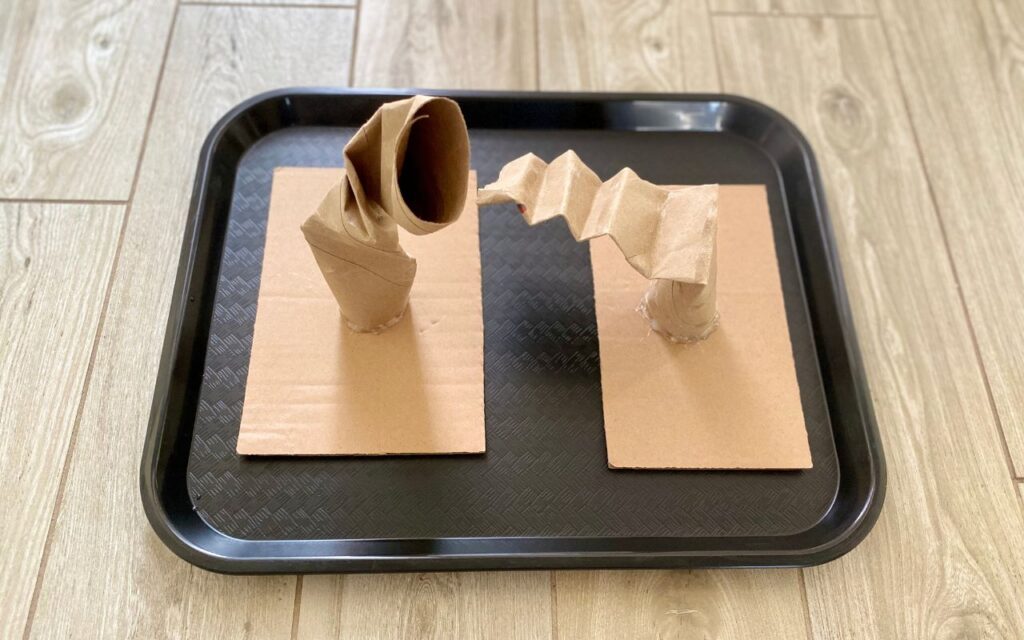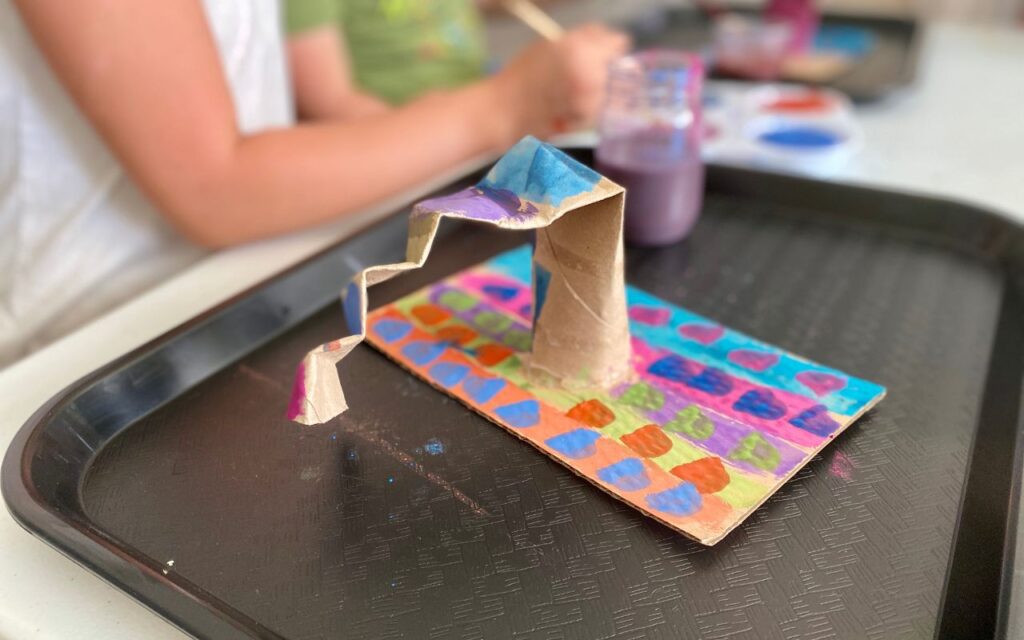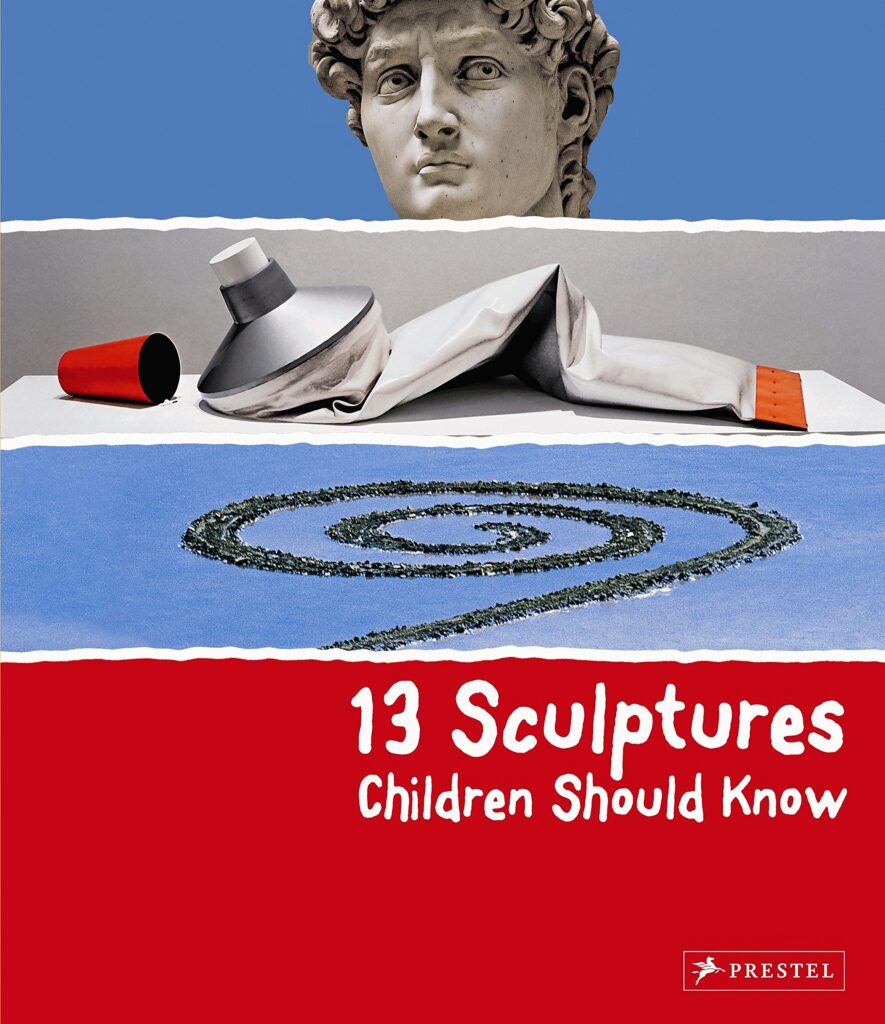With this Play invitation, children can experiment with materials and techniques, discovering exciting new ways to transform their ideas into three dimensional shapes.
This Play Invitation offers the opportunity to explore sculpting with cardboard tubes, developing motor skills, visual perception, and aesthetic concepts.
What Could Lead Us to This Play Invitation
- Children have been curious about transforming shapes;
- Children are excited about creating and the sense of authorship;
- Children have been exploring art in their surroundings.
Materials Needed
- Tempera paints
- Long cardboard tubes
- Cardboard bases
- Hot glue gun
Setting up This Play Invitation
- Choose tubes that are made of thinner cardboard, making them easier to shape.
- Use heavier cardboard for a more stable base.
- Use hot glue to attach the cardboard tube to a sturdy piece of cardboard.
Tip: If doing this with older children, they can use the hot glue gun themselves.
How to Create the Sculpture
- Invite children to bend and fold their tubes into a “sculpture.”

2. Offer tempera paints and let children color their sculptures.

Optional Next Step: Encourage children to name their artworks.
How to Nurture the Natural Unfolding of the Child’s Identity During This Play Invitation
- Children have the right to expand their repertoire of artistic references. The educator is responsible for offering children encounters with different works of art and artists, and bringing new ideas and ways of working with the materials.
- Children are entitled to explore different perspectives and dimensions with their work. The invitation to explore three-dimensional forms allows the child to leave the two-dimensional plane and develop new skills.
The Academic Learning Opportunities
- MATH: Growing awareness of pattern and structure, visual and tactile understanding of form.
- LANGUAGE: New vocabulary, using language to share ideas.
- PHYSICAL: Fine motor skills and visual-spatial relationships.
- ART: Expression of ideas through structures – exploring lines and shapes.
Extensions
- Offer clay, and let children continue to explore sculpting techniques.
Book Recommendation

A book about thirteen famous sculptures, and each holds a curious element that makes us look at it differently.

